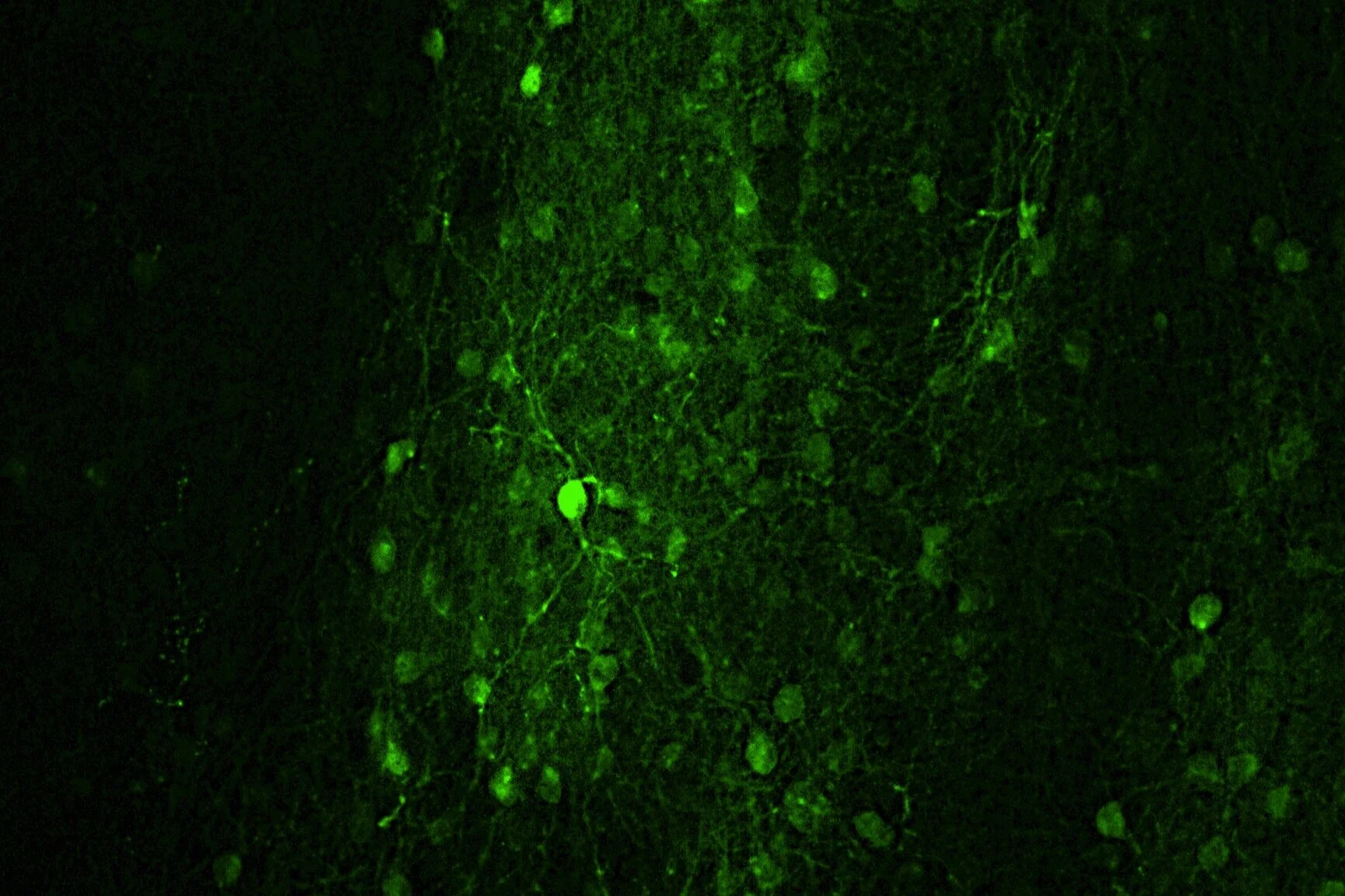
What We Do
How does the brain reprioritize information following drug use?
We use a multi-disciplinary approach to try to understand the impact that oxycodone self-administration and extended withdrawal have on the structure, function, and connectivity of neurons in key reward-related brain regions. Our goal is to define changes in the brain and identify therapeutic targets aimed at decreasing relapse to drug seeking.
Current research areas:
Calcium-permeable AMPA receptors and the incubation of oxycodone craving.
Are there common mechanisms that contribute to drug-seeking behavior?
In an effort to identify common/divergent mechanisms that contribute to the intensification (“incubation”) of oxycodone craving, we are utilizing a host of pharmacological and biochemical techniques to identify protein-level changes in the nucleus accumbens and other reward-related brain regions.
Neuronal ensemble activity identification during drug seeking.
How do pathways and circuits interact with each other to produce pathologically-motivated behaviors?
To answer these questions, we utilize viral tract tracing and Fos immunohistochemstry to see when specific neural populations are active and who they are “talking” to.
Receptor composition changes involved in motivated behaviors.
How do receptors reorganize following drug experience?
We are examining a number of pathological changes in receptor composition using techniques like Proximity Ligation Assays.
Neuronal circuit manipulation.
What is the functional significance of these changes?
Using optogenetic tools, we can manipulate cells and circuits to assess their contributions to behavior using light.
Our technical toolbox:
-
Rat behavioral models
We use a number of different behavioral techniques including drug self-administration, Pavlovian conditioning, locomotor activity testing, and the Morris water maze.
-
Behavioral pharmacology
Using drugs that act to activate or inhibit specific receptors on neurons, we can assess the role for specific receptors, cells, and brain regions in complex behaviors like drug seeking.
-
Metabolic labeling
We utilize non-canonical (FUNCAT, puromycin labeling) amino acid labeling techniques in order to measure changes in protein translation that occur as a result of drug exposure and withdrawal.
-
Protein biochemistry
In order to get a picture of how changes in key proteins impact drug-seeking behavior, we use biotinylation of cell-surface proteins, immunoprecipitation, and western blotting to label, separate, and make measurements.
-
Neuronal tract tracing
In order to assess how connections between brain regions changes as a result of drug exposure, we use a number of viruses that can be trafficked either towards or away from the soma (antero- or retrogradely).
-
Proximity ligation assay
We utilize this powerful technique to detect interactions between various receptors and proteins in situ, allowing us to visualize molecular changes with a high degree of precision.
-
Immunohistochemistry
Using antibodies designed to detect specific proteins, we can identify specific cell types or recent neuronal activity (Fos) in brain slices.
-
Optogenetics
Again utilizing viral vectors, this time to deliver light-sensitive proteins into key brain regions, we can then manipulate neural activity in behaving animals using light delivered via thin fiber optics into the brain.




